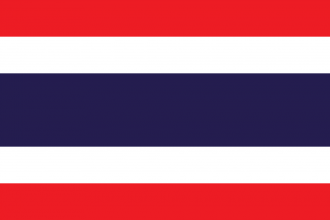According to official figures provided by the Thai Bureau of the Budget, the proposed defence budget for 2017 is 214 billion baht (approximately USD 6 billion), slightly increased compared to 2016, when defence spending amounted to 207 billion baht (approximately USD 5.8 billion). This increase is the lowest since the government came into power following the military coup in May of 2014. Military cooperation with neighbouring countries, members of the Association of South-East Asian Nations (ASEAN) and with international organisations such as United Nations (UN) are the main priorities of Thai defence strategy.
It is projected that in the next few years, the defence budget will further increase, driven mainly by the modernisation plans of the government. According to reports, the Royal Thai Army is seeking to procure new tanks and new helicopters for replacing ageing models that are now in operation. On the other hand, the Royal Thai Air Force, is expected to upgrade its existing fleet. Finally, the Royal Thai Navy is expected to procure in the long run, new frigates and Offshore Patrol Vessels (OPVs). Towards this direction, BAE Systems signed a new contract with Bangkok Dock to assist in the licensed construction of a 90 metre OPV. Under the agreement BAE will provide engineering support and advice during construction of the vessel in Thailand.
Sweden has been the leading supplier of Thai armament imports over the period 2008-2015 (see above figure). Apart from this European country, other countries that exported large quantities of arms to Thailand, over the same period, are Ukraine, the US and Singapore. Sweden has maintained its leading position in Thai defence imports, mainly due to the fact that Thailand has been among the top 10 markets for its ‘flagship’ company Saab, over an extended period of time.
Thai-Swedish relations were further strengthened with the Bilateral Cooperation Program singed by the Prime Ministers of Sweden and Thailand, during their meeting in January of 2004. Since then, Thailand purchased from Saab 12 Gripen fighters, as well as two Saab 340 AEW (Airborne Early Warning) aircraft. Also, Saab upgraded the combat management and fire control systems on two frigates of the Naresuan class. More specifically, frigates H.T.M.S. Naresuan and H.T.M.S. Taksin were equipped with new combat management and fire control systems, 9LV Mk4 and CEROS 200. Saab also upgraded the command and control system on the aircraft carrier H.T.M.S. Chakri Narubet (again to 9LV Mk4). Finally, the Swedish company, with the help of the Thai Avia Group, supplied and installed data-link equipment on the Naresuan and Taksin frigates, which allows communication between the frigates, Thailand’s existing Gripen aircraft and the two Saab 340s which are fitted with the ERIEYE airborne radar system.

